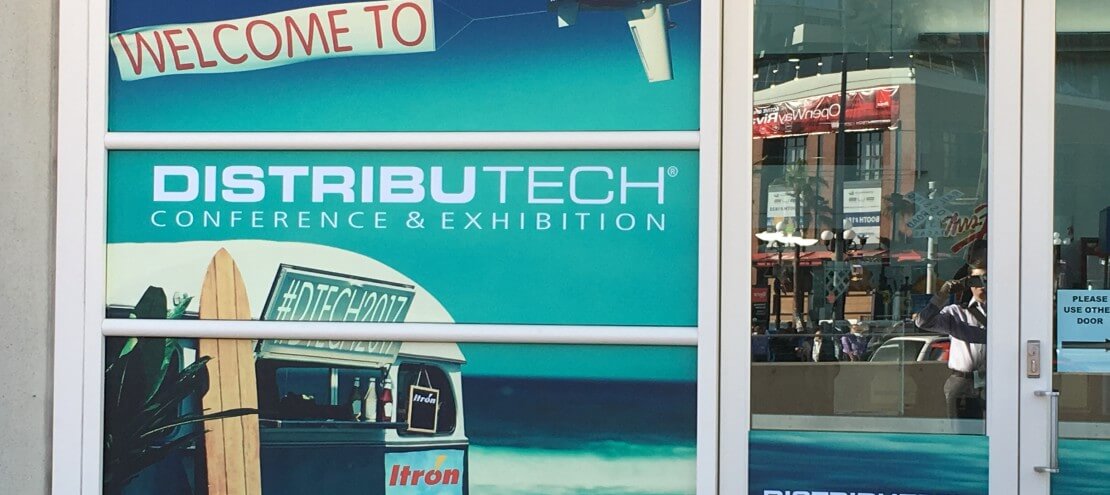
“Disruption” has become a cliché in the business world, but is nonetheless an accurate description of what’s happening in many industries these days. Perhaps the best-known example of a disrupted industry is transportation (a term itself that has been disrupted and largely replaced with “mobility”). If you follow the latest tech companies springing up in Silicon Valley and elsewhere, you’ve probably heard the descriptor, “It’s the Uber of…” more times than you’d like.
The electrical generation and distribution industry is another sector where change is happening at a breakneck pace, forcing major players to rethink everything and take a fresh look at how they can turn the challenges of a shifting landscape into opportunities and revenue streams. This was apparent at this year’s DistribuTECH conference and expo (a.k.a. DTECH) in San Diego, the largest event for the industry in the U.S.
The expo floor at the San Diego Convention Center was packed with booth after booth of software platforms, analytics engines, and pleasant-looking user interfaces. These displays vastly outnumbered those from more conventional vendors offering safety equipment, transmission line hardware, and other building blocks of the physical, analog grid that’s been the single source of electricity generation and distribution for some 100 years.
Like our century-old power grid, many energy utilities are massive operations that have functioned the same way for decades and tend to change slowly. But these giants are being pushed to change with more urgency than ever before, not so much by direct competitors but by scores of new niches popping up in their sector—niches that are both created and filled by the innovative, tech-focused exhibitors at DTECH, among others. These new (or, in some cases, newly-remade) players offer to take on many of the jobs previously carried out by monolithic, vertically-integrated utilities: monitoring; data collection and analysis; marketing; customer outreach and engagement; and managing conservation and efficiency programs.
This disruption in parallel with the proliferation of distributed energy resources (DERs) like solar panels and battery storage, was largely met with concern and resistance from insiders just a few years ago. But many utilities and other major players have come around to seeing it as an opportunity to increase revenue and operate more efficiently. If a smaller company has leveraged technology to streamline customer engagement and increase customer choice at a lower cost, why shouldn’t utilities accept their help? A growing number of utilities are doing just that, with positive results (Georgia Power’s online marketplace and related partnerships are great examples).
DTECH keynote speaker Geoff Colvin, speaking not just about the energy industry but about today’s business climate in general, made clear that new, disruptive business models are winning. To be sure, not every wacky tech-based idea is a success; but enough disruptive businesses with unprecedented approaches have forced positive change to make up a clear trend. In today’s deeply uncertain business environment, Colvin explained, embracing disruption of the status quo is often the best path to the “sustainable competitive advantage” that every business is after.
The exhibitors and conversations at DTECH 2017 point to Colvin’s advice being apt for the electric utility industry. Who or what will be the “Uber of the electric grid?” While that remains to be seen, there’s a good chance he/she/it/they were at the San Diego Convention Center last week.